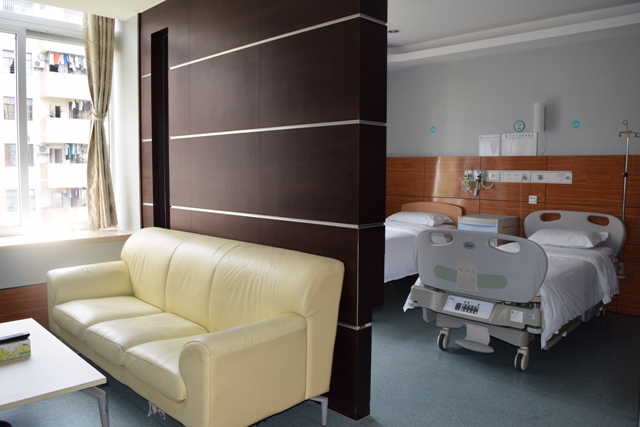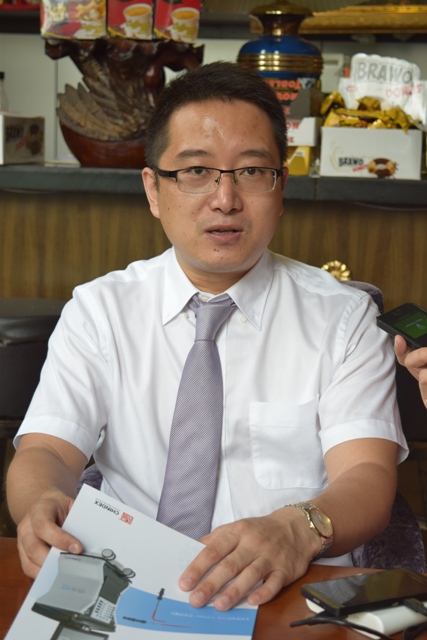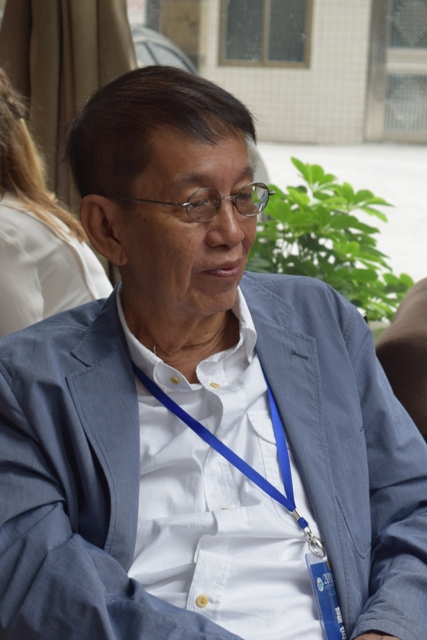
Broadcast journalist-turned-political analyst Ferdie Ramos was celebrating his 71st birthday in China when he felt a pain in the chest. He feared it was a heart attack but kept quiet about it, not wanting to ruin the merrymaking.
When he flew back home the next day, he went straight to the hospital. As it turned out, Ramos had pancreatic cancer. He was advised to undergo a Whipple procedure immediately, open surgery first performed in 1935 by an American surgeon named Dr. Allen Whipple.
Whipple surgery involves removal of a part of the pancreas’ head, said Ramos, and part of the small intestine, a portion of the bile duct, gallbladder and stomach. There are so many organs attached to the pancreas that performing surgery can sometimes take up to 12 hours.
But when he learned there was a 30-percent risk of failure during surgery—one of 10 surgeries ends in death—he started to look for other solutions.

Just when he was about to give up, one of his friends told him about Fuda Cancer Hospital in Guangzhou, China. The hospital also happens to have a consultation office at Century Medical Makati at Century City in Makati.
He dropped by for a consultation and was advised by Dr. Ning “Carl” Yu, a medical oncologist/surgeon at Fuda and consultant doctor, to undergo the latest FDA-approved procedure, the irreversible electroporation (NanoKnife) for tumor ablation.
Zap tumor cells
The NanoKnife procedure does not require open surgery. Approved in 2012 by the FDA, it’s a minimally invasive, probe-based technology that involves inserting two electrodes that release high-voltage pulses of up to 10,000 volts to zap tumor cells in an instant.

For patients with locally advanced pancreatic cancer, the NanoKnife can double their survival time. Instead of a two-year survival rate, for example, patients can now look forward to four years or more.
What NanoKnife offers is a promising treatment for tumors in the pancreas that cannot be surgically removed.
“Other important structures near the pancreas will not be harmed. With the CT scan guiding the surgeons, there is real-time monitoring of the process,” said Yu in an interview. “One session is enough if the tumor is about 3 centimeters. If it’s bigger then we have to use bigger needles.”
While open surgery takes up to 12 hours, the NanoKnife procedure takes only 20 minutes. Preparing the patient for surgery, however, can take up to two hours. Still, that’s a remarkable difference between both procedures.
“Quality of life begins right after the surgery,” said Segundo Cruz III, Fuda supervisor for the international affairs department.
Ramos, for example, was already walking and eating less than 24 hours after the procedure.
Other advantages of NanoKnife include less damage to surrounding nerves, especially for body parts with dense motor nerves, such as the neck, groin and pelvis; and fewer side effects.
Disadvantages include the cost of the procedure ($30,000), and the fact that it requires precise insertion of electrodes. At Fuda, for example, only one doctor is qualified to perform the procedure.
Pancreatic cancer has often been referred to as the “King of Cancers” because the pancreas is deep in the abdomen, with symptoms of incredible pain and jaundice; it disrupts the urge to eat and weakens patients who are no longer receiving proper nutrition, Cruz said.
“The NanoKnife procedure is 80- to 90-percent effective. Many of them can eat and talk after the treatment. There are hardly any post-operation side effects. They can feel a little pain from the needle insertion but that’s about it,” Yu said.
NanoKnife is also used for liver, lung and breast cancer.
Another procedure offered at Fuda Cancer Hospital is argon-helium knife cryosurgery (cryosurgical ablation) for breast cancer, a minimally invasive procedure that uses minus 150-degree Centigrade super-freeze to destroy the tumor, prevent it from spreading, and allow patients to return to normal activity a few days after the treatment.
Effective and inexpensive
American Laura Ross-Paul was one of the first people in the world to undergo cryoablation 13 years ago and is cancer-free to this day. She is also the coauthor of the book “They’re Mine and I’m Keeping Them.”

“Cryoablation is effective and inexpensive, $10,000-$20,000 per patient, versus the gold-standard treatment of mastectomy and rebuilding that’s around $100,000,” Ross-Paul said in her presentation. It is the low potential return of investment, she continued, that keeps investors from getting the approximately $10 million needed to get an FDA approval. To this day, she said, cryoablation is still considered experimental in the United States.
(Cryoablation is approved only in certain states in the United States. In China, it is FDA-approved.)
During the procedure, a knife head that uses argon and rapidly lowers its temperature to minus 150°C is inserted into the tumor. The surrounding tissues will then begin to freeze, creating multiple ice balls that eventually turn into one big ice ball.
By turning off the argon and turning on the helium, the temperature of the necrotic area will quickly rise to 40°C. In three to five minutes, the whole freeze-thaw cycle will repeat, until the tumor is completely destroyed.
It’s a convenient operation. The knife can be directly inserted into the small tumor from any angle, since there are no other vital structures or organs surrounding it. For bigger tumors, more knives are needed.
“Women are aware of the need for early detection, and in many cases, something suspicious is seen in the early mammogram. It is too small for biopsy and may not be cancer at all. So the current practice is to wait six months and have another mammogram. I can assure you, this is not what women want. They want to do something as soon as possible to prevent a tumor from forming,” Ross-Paul said.
She suggests cryoablation early on, when tumor formation is suspected, to avoid months of anxiety.
“If the protocol is adopted, cryoablation will prove itself because a statistical pool will show that a lower percentage of women are diagnosed with breast cancer if they detect and freeze versus detect and wait… This is what women, and medicine, need,” she said.
Meantime, Ramos is back in China for a follow-up. He looks forward to returning home to be with family and friends.
The Fuda consultation office is at Century Medical Makati at Century City, Makati; e-mail [email protected] or [email protected]; visit fudahospital.com.
Follow the author on Twitter and Instagram.








































